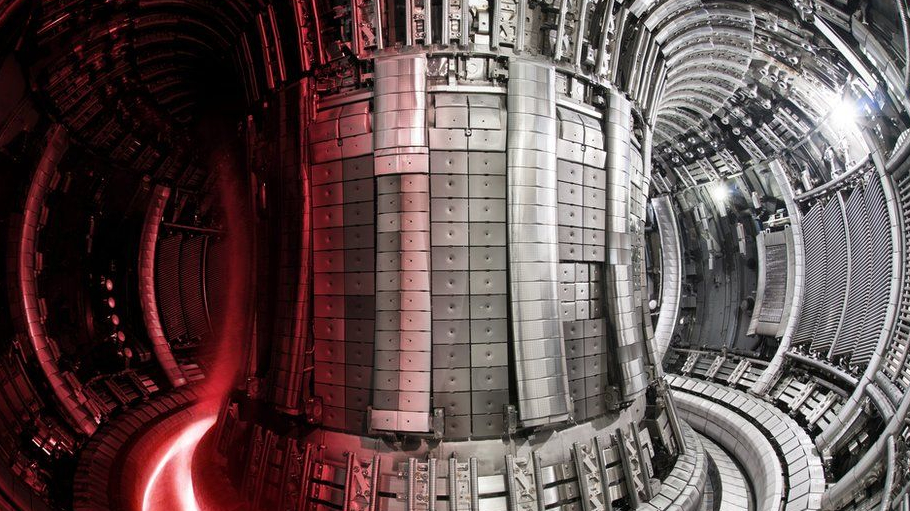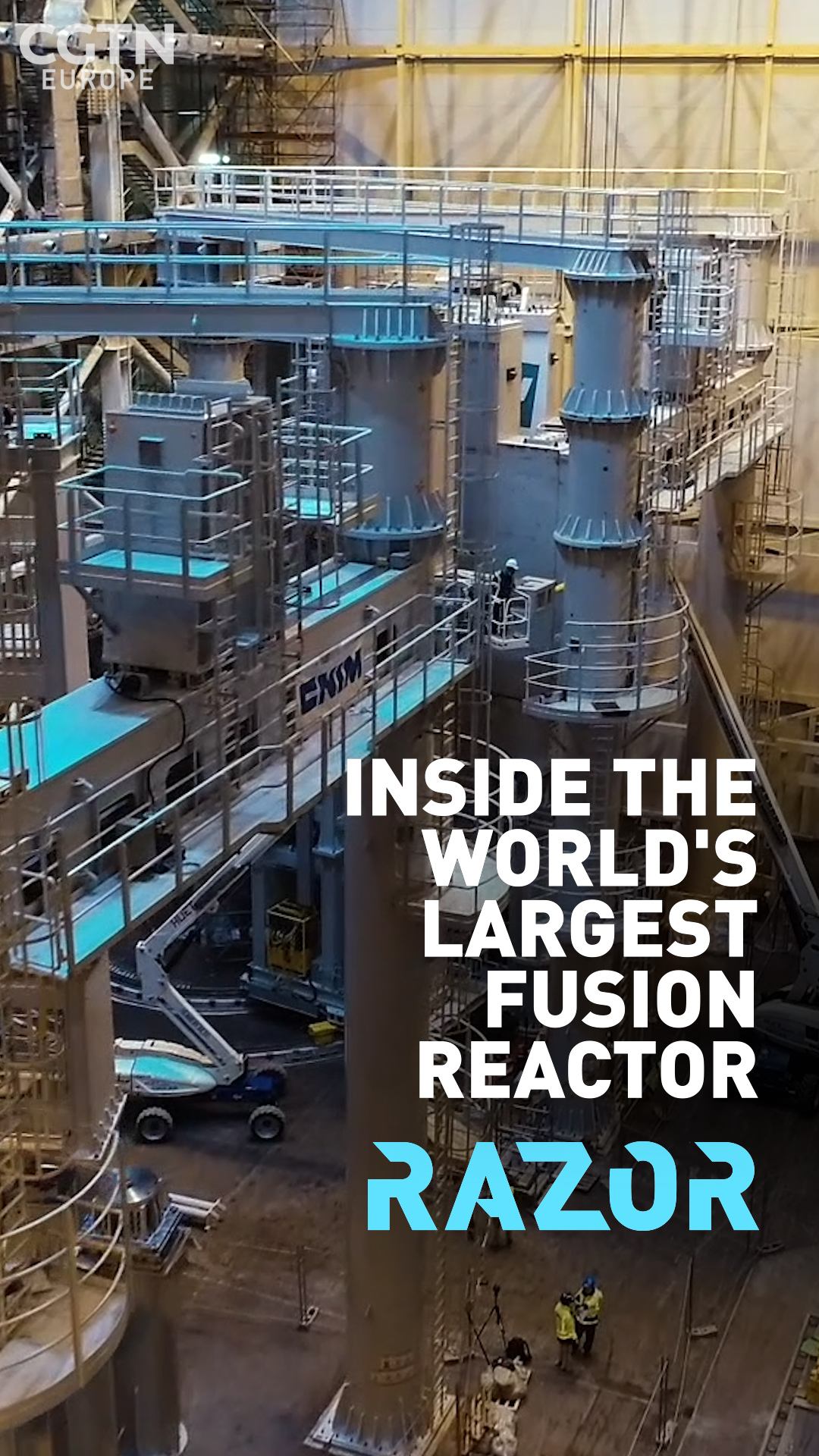
The Joint European Torus (JET) facility near Oxford in central England. /UK Atomic Energy Authority
The Joint European Torus (JET) facility near Oxford in central England. /UK Atomic Energy Authority
British scientists say they have smashed a previous record for generating fusion energy, an achievement hailed a "milestone" on the path towards harnessing a power source with revolutionary potential.
Nuclear fusion is the same process that the sun uses to generate heat. Proponents believe it could help address climate change by providing an abundant, safe, and green energy source.
A team at the Joint European Torus (JET) facility near Oxford in central England generated 59 megajoules of sustained energy during an experiment in December, more than doubling a 1997 record, the UK Atomic Energy Authority said.
READ MORE
The psychological toll of Ukraine's conflict
Infrastructure becomes a target
Civilians train in preparation for escalation
The results "are the clearest demonstration worldwide of the potential for fusion energy to deliver safe and sustainable low-carbon energy," the agency added in a statement.
The donut-shaped machine used for the experiments is called a tokamak, and the JET site is the largest operational one in the world.
Inside, a tiny amount of fuel comprising deuterium and tritium – both are isotopes of hydrogen – is heated to temperatures 10 times hotter than the sun's center, in order to create plasma.
READ MORE: What is nuclear fusion, is it safe and is it likely?
This is held in place using superconductor electromagnets as it spins around and fuses – releasing tremendous energy as heat.
Fusion is inherently safe in that it cannot start a run-away process. Gram for gram it releases nearly four million times more energy than burning coal, oil or gas, and creates virtually no harmful waste, unlike current nuclear fission reactors.
'Ground-breaking'
The results announced on Wednesday demonstrate the ability to create fusion for five seconds, but longer times will be needed for the process to become viable as a conventional power source.
"If we can maintain fusion for five seconds, we can do it for five minutes and then five hours as we scale up our operations in future machines," said Tony Donne of the EUROfusion consortium.
01:55

A larger and more advanced version of JET is currently being built in southern France, called ITER, where work will be informed by the latest Oxford data when it comes online around 2025.
International cooperation on fusion energy has historically been close because, unlike nuclear fission used in atomic power plants, the technology cannot be weaponized. The France-based megaproject involves China, the EU, India, Japan, Korea, the U.S. and Russia.
ITER chief Bernard Bigot hailed the JET's results as the production of energy on a "nearly industrial scale."
Despite dozens of tokamaks being built since they were first invented in Soviet Russia in the 1950s, none has yet managed to produce more energy than is put in.
British science minister George Freeman also hailed the "milestone results."
"They are evidence that the ground-breaking research and innovation being done here in the UK, and via collaboration with our partners across Europe, is making fusion power a reality," Freeman said.
Source(s): AFP

